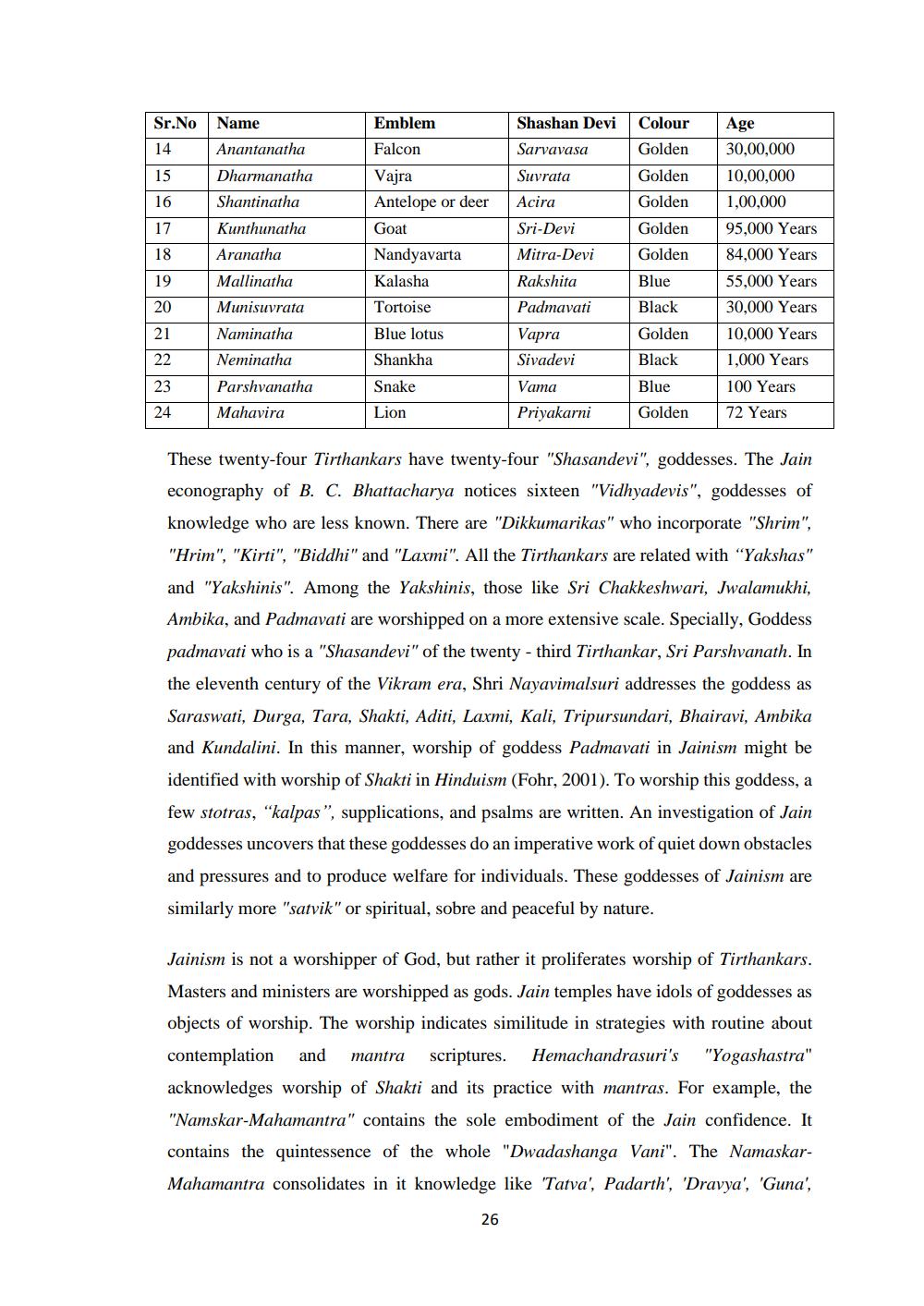________________
14
16
Shant
Sr.No Name
Anantanatha 15
Dharmanatha
Shantinatha 17 Kunthunatha
Aranatha 19 Mallinatha 20 Munisuvrata
Naminatha Neminatha
Parshvanatha 24 Mahavira
Emblem Falcon Vajra Antelope or deer Goat Nandyavarta Kalasha Tortoise Blue lotus Shankha Snake Lion
Shashan Devi Colour Sarvavasa Golden Suvrata
Golden Acira
Golden Sri-Devi Golden Mitra-Devi Golden Rakshita Blue Padmavati Black Vapra
Golden Sivadevi Black Vama
Blue Priyakarni Golden
Age 30,00,000 10,00,000 1,00,000 95,000 Years 84,000 Years 55,000 Years 30,000 Years 10,000 Years 1,000 Years 100 Years 72 Years
These twenty-four Tirthankars have twenty-four "Shasandevi", goddesses. The Jain econography of B. C. Bhattacharya notices sixteen "Vidhyadevis", goddesses of knowledge who are less known. There are "Dikkumarikas" who incorporate "Shrim", "Hrim", "Kirti", "Biddhi" and "Laxmi". All the Tirthankars are related with "Yakshas" and "Yakshinis". Among the Yakshinis, those like Sri Chakkeshwari, Jwalamukhi, Ambika, and Padmavati are worshipped on a more extensive scale. Specially, Goddess padmavati who is a "Shasandevi" of the twenty-third Tirthankar, Sri Parshvanath. In the eleventh century of the Vikram era, Shri Nayavimalsuri addresses the goddess as Saraswati, Durga, Tara, Shakti, Aditi, Laxmi, Kali, Tripursundari, Bhairavi, Ambika and Kundalini. In this manner, worship of goddess Padmavati in Jainism might be identified with worship of Shakti in Hinduism (Fohr, 2001). To worship this goddess, a few stotras, "kalpas", supplications, and psalms are written. An investigation of Jain goddesses uncovers that these goddesses do an imperative work of quiet down obstacles and pressures and to produce welfare for individuals. These goddesses of Jainism are similarly more "satvik" or spiritual, sobre and peaceful by nature.
Jainism is not a worshipper of God, but rather it proliferates worship of Tirthankars. Masters and ministers are worshipped as gods. Jain temples have idols of goddesses as objects of worship. The worship indicates similitude in strategies with routine about contemplation and mantra scriptures. Hemachandrasuri's "Yogashastra" acknowledges worship of Shakti and its practice with mantras. For example, the "Namskar-Mahamantra" contains the sole embodiment of the Jain confidence. It contains the quintessence of the whole "Dwadashanga Vani". The NamaskarMahamantra consolidates in it knowledge like 'Tatva', Padarth', 'Dravya', 'Guna',




